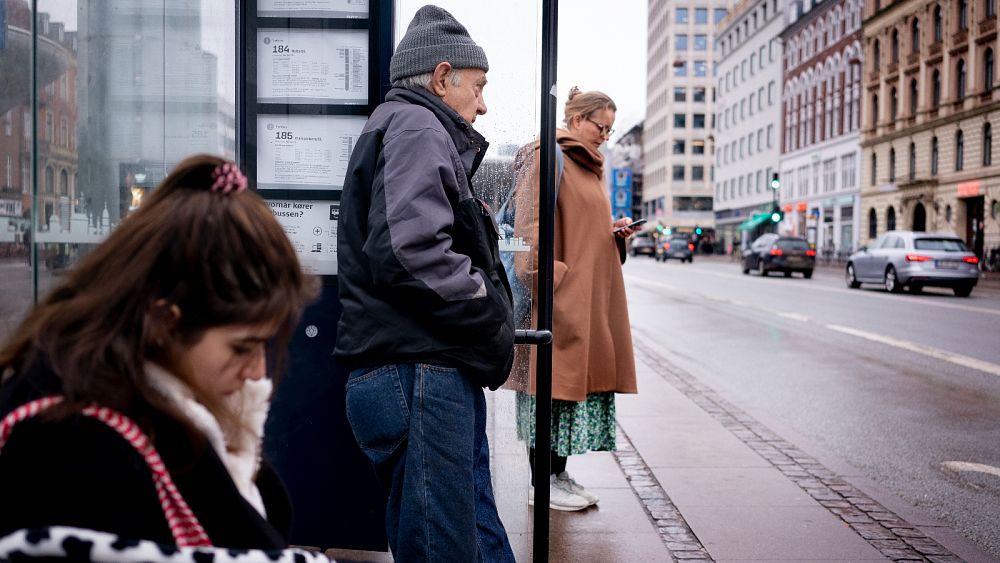When Pia Krabbe Larsson got sick in the early days of the COVID-19 pandemic, it felt like a bad flu, but she was back at work 10 days later. Then the headaches started, followed by crushing fatigue.
By July 2020, Larsson was effectively bedridden and took a leave of absence from her job as a home nurse in Farum, Denmark. She never went back.
After visiting multiple doctors, Larsson, 44, was eventually diagnosed with myalgic encephalomyelitis/chronic fatigue syndrome (ME/CFS), a serious postviral condition that affects the nervous system and has been linked by some researchers to long COVID.
“It’s a tough time,” said Thomas Clifford Larsson, Pia’s husband. “But she’s my wife [and] we are family. And you do things for family you will not do for any other people.”
The Larssons are far from alone. The Institute for Health Metrics and Evaluation estimates that as of 2021, about 29,940 Danes had developed long COVID lasting at least three months – and as 2022 comes to a close, the toll is likely even higher.
That’s despite a generally lauded pandemic response.
In September 2021, Denmark became the first European Union country to lift all COVID-19 restrictions, citing its high vaccination rate and compliance with public health guidance.
Authorities briefly reinstated some measures during the Omicron-driven surge in early 2022 and launched a fall booster jab campaign in September for high-risk Danes ahead of an expected winter wave.
But now, as most of the country moves on from the pandemic, Danes with long COVID, or “senfølger,” say they feel left behind.
“Many of us are just tired of long COVID not being recognised by the health system in Denmark,” said Katja Pedersen, another person who has been dealing with long-term symptoms after COVID-19 but who has struggled to get a diagnosis.
“We experience that there’s no help to get from the doctors or our health system, so there is not much fighting spirit left.”
Long COVID is a nebulous disease that can present with a range of symptoms.
Research published this summer in Nature Communicationsfound that even among non-hospitalised COVID-19 patients in Denmark, a “considerable proportion” had lingering symptoms up to a year later, including physical and mental exhaustion, difficulty concentrating, memory problems and trouble sleeping.
Denmark has set up a handful of specialised clinics for patients with long COVID.
Early on, they focused on creating referral guidelines for doctors and hospitals where these patients were likely to show up, said Dr Jane Agergaard, who treats long COVID patients as an associate infectious diseases professor at Aarhus University Hospital.
“We have quite a lot of patients still,” said Agergaard. “The thing is, it’s very difficult to have a disease that you’re not able to diagnose with certain clinical tests.”
Several patients said they have struggled to get an official diagnosis and treatment. Dorthe Witzell, 57, said she’s been grappling with brain fog, pain and fatigue since getting COVID-19 in December 2020.
“I have seen a very great variation of how the system has been working,” Witzell said. “But the result is the same: They have no answers.”
The policy response to any health crisis requires trade-offs.
Throughout the pandemic, Danes have been more concerned with the system-level risks of COVID-19, such as the potential that hospitals could become overwhelmed, than their individual risk of getting sick, polling shows.
This spring, 50% of Danish adults said they were concerned about long COVID’s risks, according to Michael Bang Petersen, a political scientist at Aarhus University who advised the government’s pandemic response.
He said it’s hard to say whether that share would be higher if authorities had publicly emphasised long COVID more – or if the authorities would prioritise long COVID more if Danes were more worried.
“There is alignment between the response and the perceptions of the majority of Danes,” Petersen said.
The question now is whether the Omicron variant, which led to Denmark’s biggest COVID-19 wave yet last winter and any emerging variants will lead to an increase in long COVID patients – and if so, how severe their symptoms will be.
In letting Omicron rip, Danish authorities assumed that because the variant generally caused milder illnesses, the ensuing burden of long COVID would also be smaller. A preprint study from the Statens Serum Institut indicates that the bet has paid off, with a lower risk of lingering symptoms associated with Omicron than the Delta variant.
But fewer long COVID patients doesn’t mean zero, said Anders Hviid, acting head of SSI’s epidemiology department and the study’s lead researcher.
“There still are more symptoms than you would expect, months after you’ve been infected.”
In all, long COVID patients said the lack of communication from the top has hampered their ability to make their struggles known to the Danish public and to push for better treatment.
They said they want international research on long COVID to be shared more widely, for doctors to learn more about symptoms and emerging treatments and for more support from their workplaces.
“I want companies to be more aware of what we’re actually dealing with,” said Eva Schomacker Munnecke, 54, an office manager who’s struggled to work full-time since developing long COVID. “It’s hard to be the one to have to explain this unexplainable thing.”
The issue isn’t going away anytime soon. The World Health Organization is urging European countries to take long COVID seriously, given its expected toll on global health and economics in the years to come.
“We’re saying, hang on a minute, this is not done yet, we’ve still got millions of people who are potentially suffering for a long period of time,” said Catherine Smallwood, senior emergency officer for the WHO’s European region.
In Denmark and around the world, long COVID patients will be waiting. They have no other choice.
“When a person dies, you have a period of sadness you have to go through to accept the situation that never can be the same,” Witzell said. She sees parallels with long COVID: “It’s not a disease that kills you, but it takes your life away.”



